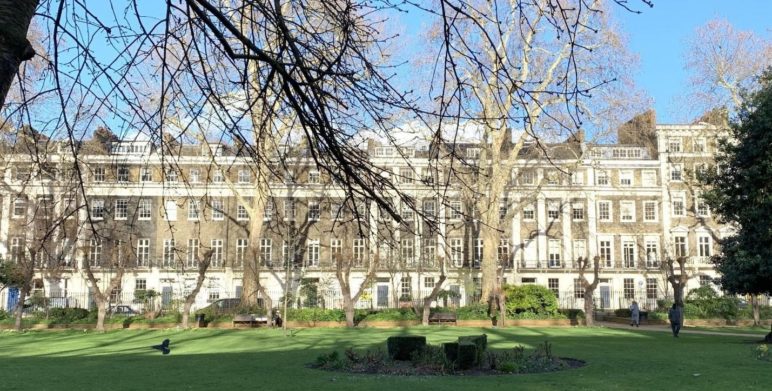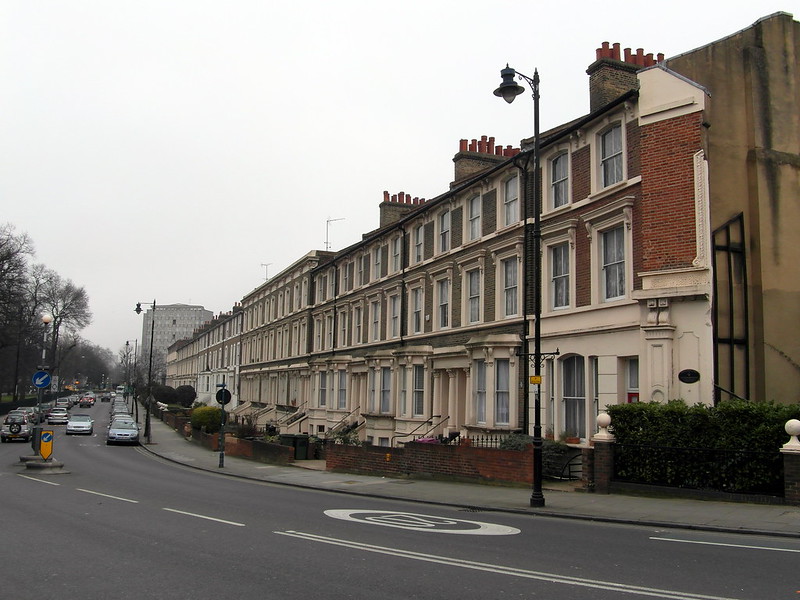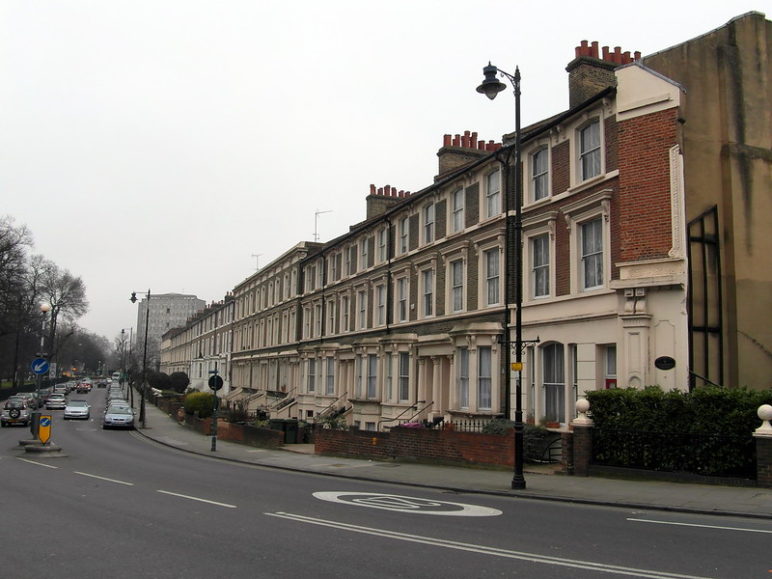Last time, I described a city-level approach to overcoming the political forces that keep housing in lockdown. This time: a novel idea, not yet tested anywhere.
Everywhere, opponents of state, provincial, or national policy action for abundant housing argue that top-down action violates the principle of local control. Even in city debates, neighborhood groups often call for increased local control. Abundant-housing proponents typically counter that too much local control is the problem: it exaggerates the influence of homeowners who oppose change and ignores the rest of society’s interest in providing plenty of homes.
But what if we took that call seriously? Extremely seriously?
Londoner John Myers has done that. His brainchild is “hyperlocalism.”
The idea is to legalize bottom-up upzoning, not at the city or neighborhood level, but at the level of the individual block or even lot, through mutual agreement among neighboring property owners. The goal is to tap self interest in service of the public interest.
In one variant, Myers proposes that we stop trying to upzone whole swaths of detached houses at once. Instead, we would pass a law that gives individual blocks the option to upzone themselves—going from three floors to five or six floors, for example—by supermajority vote of the property owners. The taller buildings, under the plan, could be subdivided into flats or condos. No block would be obligated to change, and no owner would be obligated to build up to the new limit. Everything would be optional.
If a block does change, it would have to do certain things, such as commit to one of a menu of shared design guidelines that would echo much-loved local streets (such as the one pictured below in Myers’ scheme). Upzoners might also have to pay compensation to neighboring blocks, if they obstructed a view or threw shade on gardens.
Out of the trenches
As I have detailed, upzone proposals in single-detached neighborhoods march straight into the machine-gun fire of homevoters’ rational self-interest.
A better approach, Myers avers, might be to declare a truce and offer a new peace plan, one that harnesses self-interest. Don’t force upzones in single-detached neighborhoods, just allow each block to decide whether it wants one. If enough homeowners agree to taller buildings and more neighbors on their block, it’s done. If not, nothing changes. Blocks would consider their self-interests, and some of the blocks would opt in.

One design for a street of five-story row houses in London. Photo by John Myers, used with permission.
Earlier in this series, I said that homeowners’ financial self-interest dictates restrictions on homebuilding, because citywide scarcity raises property values. That’s true, but I skipped some nuances that are now important. Citywide scarcity raises property values overall, but a neighborhood upzone that covers your home would likely increase your property value. Why don’t homeowners push for upzones then? For one thing, homeowners are not motivated only by property values, but even if they were, neighborhood-specific upzones have winners and losers. Most homeowners come out ahead, but some lose value: if you have the nicest house on the block, and it’s suddenly surrounded by apartment buildings, its value will drop. Technically, the value of land increases in an upzone, while the value of the structure on it might decrease now that surrounding buildings may change. Those with the nicest houses are therefore in danger of losing value, while those with average or less-attractive houses are likely to gain. Nothing is certain, though, and because few people can afford to gamble with their home value, even where upzones would increase average values, it’s rational to oppose neighborhood-wide change.
But at the level of the individual block, homeowners can better judge if they will gain or lose. And for some blocks, upzoning makes sense for everyone.
How many blocks would opt in? Most probably would not. But there are thousands of single-detached blocks in big cities. Surely some would, because the payoff would be handsome. Maybe one in 100 to begin with? Maybe one in 10 over a decade? Maybe over half a century, half of blocks would do so? The biggest payday would be for the neighborhoods closest to city centers, where demand for homes is strongest, so the voluntary upzones might concentrate where they are most needed. Maybe over time, the locked-down single-detached areas still enveloping many urban cores will give way to six-story zones, home to three times as many residents, or more. Maybe North American cities would fill in with mid-rise apartment blocks like Barcelona’s or low-rise flats like Montreal’s or an eclectic mix of both, like Tokyo.
One of the politically appealing features of Myers’ block-by-block plan is that it can start small, with even a single block. Others can watch the pioneer and see how it goes. With more participation the retrofits will become easier to carry out, as an industry of specialized firms, including bankers, lenders, investors, architects, and builders, would emerge to smooth the process. Some entrepreneurs might launch firms specializing in helping homeowners combine with their neighbors and navigate the process, even facilitating temporary housing during the months when the block is under reconstruction. Indeed, if local officials are hesitant to adopt the idea everywhere, they could launch hyperlocalism as a pilot project, offering the opportunity to the first few blocks that apply, and extending it later. Myers suspects that single block upzones will prove contagious: if your neighboring block goes from three to five floors and owners add tens of thousands of dollars to their nest eggs, you might warm to the idea for your own block.
Reciprocal intensification (with pyramiding)
In New Zealand, meanwhile, independent housing researcher Brendon Harré proposes pushing Myers’ hyperlocalism to an even more granular level. In his plan for “reciprocal intensification,” two neighboring property owners in a single-detached zone could, by signing a standard form, waive each other’s setback requirements. Both would then be allowed to expand their homes or rebuild, rowhouse-style, up to the shared lot line. In the North American context, reciprocal intensification would also award them permission to build enough additional indoor space (floor-area ratio or FAR, in planning argot) and, perhaps, install one or more extra dwellings. Harré’s version allows single-detached houses that are commonplace in Cascadia to gradually give way, in two-lot couplets, to rowhouses or front-and-rear townhouses, cottage clusters, or other low-rise home styles. Reciprocal intensification might advance voluntarily, in pairs of lots and then by accretion to neighboring lots. It might even ultimately convert whole blocks into something more like with a perimeter of rowhouses around a mew or community green.
To add even more dwellings, a jurisdiction’s policy for reciprocal intensification could award more homes (and corresponding indoor space) with each extra adjoining neighbor who opts in, an approach sometimes called “pyramiding.” For each parcel that opts in, for example, every already-in parcel might get authority to add another unit. So, for example, on a 10-lot block, the first 2 parcels that opt in would get 1 extra unit each: allowing duplexes on each—a total of 4 homes instead of 2. When a third lot joins, each lot gets 3 homes (triplexes), for a total of 9 units, rather than 3. By the time the tenth parcel joins, each lot gets 10 homes, for a total of 100 rather than 10. At 100 homes per block, homeowners might choose to incorporate or form a cooperative, pool their land, and redevelop the whole block as a set of 3-story apartment buildings with courtyards, rather than trying to fit 10 homes on each lot. In a city where pyramiding was the law, businesses might even spring up to facilitate this process.
Pyramiding would create a powerful motivator for neighbors to recruit each other: by the time nine neighbors are “in,” the rewards for joining would be enormous. In fact, the economics of the whole approach might hinge on pyramiding. Redeveloping a single-detached lot from one house to two rowhouses rarely pencils. In Cascadia’s big cities nowadays, houses are so expensive that they have to be quite dilapidated before owners can break even by tearing them down and replacing them with two homes. Multiplying the number of dwellings by four, six, even ten, in contrast, would often make redevelopment pencil in the close-in, low-carbon neighborhoods where housing is most needed. And each of those homes would likely be more affordable, because it would be smaller than the dwelling it replaced.
Laneway rows and master planned blocks
Harré has other ideas, too. One is designed to fit the narrow-but-deep lot shape common in New Zealand cities and also found in Cascadia, especially in its low-density suburbs: laneway developments would involve two or three neighboring lots and their backdoor neighbors in a voluntary upzoning. In place of four or six lots, each with a detached house, owners would bisect the block with a narrow lane and erect two rows of homes along it.
Another brainstorm, designed to fit in New Zealand’s overlarge suburban blocks (also common in Cascadia), would recognize voluntary upzoning for entire blocks, where neighbors agreed to a master planned block redevelopment that might quintuple the number of homes but make better use of green space by clustering dwellings.
All these models of hyperlocalism could coexist—Myers’ block by block plan, Harré’s reciprocal intensification with or without pyramiding, laneway rows, and master planned blocks—as a menu of options extended to single-detached neighborhoods. Perhaps other models would emerge too.
How fast?
The political question about all this theorizing, of course, is whether it can amount to anything in the real world. Can it bypass the trench warfare of conventional upzone debates and dramatically accelerate the process of retrofitting Cascadia’s single-detached neighborhoods to meet the acute needs for housing in compact, low-carbon cities? Would any city or larger jurisdiction award such sweeping powers to neighboring property owners?
Merely doing better than conventional upzoning politics is, unfortunately, not a high bar. As one element of its much-trumpeted MHA upzones, Seattle changed the housing rules covering 6 percent of the city’s single-detached lots. Many of these same lots were actually slated for upzoning in the mid-1990s, situated as they are in or adjacent to the city’s designated growth hubs or “urban villages,” but won reprieves through the political horse trading of the day. So, in a sense, parts of the MHA upzones didn’t take four years: they took a quarter century. Most of the parcels upzoned, moreover, moved to a previously little-used category called “small-lot residential (SLR)” which barely increases the number of homes owners can build. Indeed, in some cases, SLR is a downzone. A low bar indeed.
Still, hyperlocalism at present is nothing but a twinkle in a few dreamers’ eyes. Many questions need answers: Would only homeowners get to vote or would renters too? How long would you have to own or live there to get a vote? What voting rules would apply: secret ballots or just signing a petition? Who would conduct the voting? Would most owners stay through (or return after) the block’s remodel or would they sell out and move? Would many homeowners have the skills and access to capital to complete the process or would third parties be essential? Is it fair to let blocks decide for themselves when society overall has such a strong interest in abundant housing, especially near jobs, parks, schools, and transit? Even if it’s not entirely fair, is it worth piloting hyperlocalism anyway, to see if it holds at least one key to opening the locks of residential lockdown? These questions and more deserve attention from planning commissions or other policy makers, and once answered, real-world trials could follow soon.
Some places where pilots might make political sense:
- In an area with the fiercest NIMBY presence—even one where NIMBYs have defeated previous upzoning proposals. In Seattle, Wallingford comes to mind.
- In a suburban city where residents have a strong belief in property rights and individual liberty.
- In a three-block perimeter around public schools surrounded by single-detached zoning.
- In an area with large houses, where the pilot might not allow more floor area but instead allow internal subdivision into duplexes, triplexes, or flats.
Time is short. Nothing we’re doing is rising quickly enough to meet the housing and climate challenges. The fight for local land-use reform is trench warfare: protracted and costly. Hyperlocalism is an intriguing approach that deserves a shake.
Next time: Strategies to reconcile abundant housing with community stabilization.











David Wade
I love this series and these ideas. Illustrations of the proposals would be very helpful. Keep up the great work, Alan!